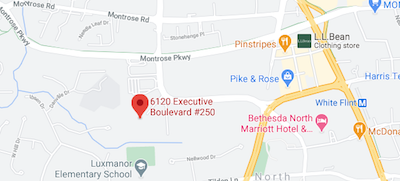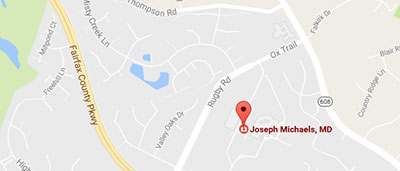Facial fat transfer is a procedure that involves taking your own fat deposits and redistributing them into the face for volumization and rejuvenation purposes. It is most capable of resolving cosmetic issues such as facial hollowness and deep folds, common signs of aging. Surgeons use liposuction techniques to harvest the needed fat before preparing it into syringes for reinjection. Fat is a biocompatible, all-natural alternative to dermal fillers, and can last indefinitely if patients can maintain a stable weight.
Many patients enjoy the prospect of slimming down excess fat from areas such as the buttocks, thighs, abdomen, or hips. Facial fat transfer can transform how you present your face to the world and help you regain a sense of youthful vitality.
To learn more about what this minimally invasive procedure can offer you, contact Dr. Joseph Michaels at (301) 468-5991 (Rockville, MD) or (703) 957-8610 (Fairfax, VA). You can also reach him with his contact form, and one of his staff members will respond to your inquiry as soon as they can. Dr. Michaels’ philosophy is to build a trusting relationship with each of his patients, ensuring that they make the right decision for their health and aesthetics. If you are not within the Washington D.C. area and are still interested, you can schedule a virtual consultation, and Dr. Michaels will make sure that you have the same high-quality and thorough experience.
Contents
What is Fat Transfer?
Fat grafting, also called fat transfer, is a low-risk surgery that incorporates tiny incisions (1 to 1.5 cm long) and liposuction methods to safely remove fat deposits with suction. Surgeons then take the time to cleanse the sample from impurities like blood and other cellular debris, an important aspect that will allow these cells to grow and flourish in their new location. After this step, they only need to administer injections just under the skin to evenly place these new cells in the targeted areas of the face or body. Facial fat transfer is incredibly versatile and can resolve a number of aging concerns. After the cells settle in completely, patients can reap the benefits of:
- More facial fullness
- Reduction of deeper facial folds around the forehead
- More rejuvenated eyes with reduced eye bags
- Reduction of tear troughs
- Less sunken temples
- Reduction of nasolabial folds and marionette lines
- More defined chin and less jawline jowling
- Fuller lips (1)
Candidates for Facial Fat Transfer
The ideal candidate for a facial fat grafting procedure is in good health and looking to create more attractive facial contours and/or resolve issues of fat atrophy from aging. Patients should desire to find a more lasting solution that maintains results longer than dermal fillers or Botox. Those with facial burn scars, lipid disorders, blood clotting disorders, or cardiovascular disease should avoid this procedure and choose a less invasive option. (1) Those who are prone to keloid scarring should inform Dr. Michaels so that he can find a means to prevent this risk. Finally, patients should be within the overweight or normal weight range with adequate fat deposits that Dr. Michaels can harvest from.
Personal Consultation
During your consultation, Dr. Michaels will evaluate possible donor areas on your body and ask you about the results you would like to attain with facial fat grafting. After evaluating your features, he will come up with a comprehensive treatment plan that will work to enhance your aesthetic and create natural-looking contours. You should come prepared with questions that you would like to ask Dr. Michaels, and he will answer as thoroughly as possible. Aside from talking about your desired goals, he will also outline the preparation process, how the procedure will go, the length of the procedure, and the recovery and downtime required. As a surgeon with multiple areas of expertise, he can provide you with the well-rounded knowledge you will need to heal well and as quickly as possible.
To inquire about a consultation today, contact his location in Rockville at (301) 468-5991 or Fairfax at (703) 957-8610, and we will be happy to help you find a date that works well for you. You can also reach us through Dr. Michaels’ contact form, or request a virtual consultation for your convenience.
Preparation
Although fat grafting is a minimally invasive procedure, there are still some preparation steps you should take to promote safety and the best results. If you smoke regularly, Dr. Michaels will advise that you stop at least a few weeks before and after your procedure. This will optimize your cardiovascular system and help you heal without complications. Quitting cigarettes and nicotine will also encourage fat cell survival. Dr. Michaels will also review the medications and supplements that you regularly take and ask you to stop taking blood thinners like aspirin. On the day of your procedure appointment, you should wear loose, comfortable clothes that will be easy to take off once you are cleared to go home.
Procedure Steps
Dr. Michaels completes fat transfer surgeries in three steps for enhancement of the face or body, consisting of fat collection, purification, and reinjection. For facial fat transfer, Dr. Michaels will need to administer local anesthesia and sedation since he only needs to perform a small volume transfer. This way, patients can also avoid the bothersome side effects of general anesthesia. After this, he will make a centimeter-long liposuction incision that will accommodate the hollow cannula for tumescent fluid infiltration. This fluid is a solution of lidocaine for further anesthetization, epinephrine to limit bleeding, and saline to encourage the fat cells to swell and separate from surrounding tissues.
Once the tumescent fluid settles in, he will remove the targeted fat with a suction cannula; typically, around 2 tablespoons of fat are required for facial rejuvenation purposes. (2) Next, he will cleanse the fat deposit with a solution and another purification process to remove this solution from the fat. As a result, the fat will be free from unneeded components that will not add to the volumizing effect. (3) Finally, he will prepare this fat into injections and strategically distribute them into the treatment areas, providing a more attractive facial shape and natural-looking projection.
Recovery and Results
After your procedure, you may experience mild soreness, swelling, and bruising in both the treatment areas of your face and the donor area, but these can be easily mitigated with Dr. Michaels’ over-the-counter medication recommendations. Since the procedure only involves small volume fat changes, it is unlikely that you will need prescription medication. You will likely be able to resume your daily routine and desk job in just 1 to 2 days, but it could take 2 weeks for the swelling to fully subside. Within 1 week, you will be able to resume light exercise, and soon after that, you can continue your normal gym routine. Dr. Michaels will advise you to keep your head elevated- especially while sleeping- to reduce swelling. Even with the tenderness you may experience, you should avoid applying ice to your face, since this can affect fat cell survival. Until all inflammation recedes, be sure to only use gentle face products and avoid vigorously scrubbing the skin.
Some of the fat cells will die within the first few months of the procedure, but the remaining cells will begin to plump and create your final outcome at around 6 to 9 months post-procedure. Fat grafting provides semi-permanent results that will sustain themselves for as long as you work to maintain your weight. As you continue to age, the results will slow down facial atrophy, sagging, and other signs of aging.
Cost of Facial Fat Transfer in Washington, D.C.
The cost of your facial fat transfer procedure will mostly depend on the extent of your procedure and the results you want to attain. Dr. Michaels will review other factors such as anesthesia and surgical fees to determine the total cost for your surgery. Dr. Michaels also strives to make his procedures and services as cost-effective as possible, so we encourage you to check out our financing options if you are interested in covering the cost with affordable payments.
To get a more comprehensive and detailed review of your unique needs, call for a consultation at (301) 468-5991 (Rockville) or (703) 957-8610 (Fairfax) or fill out our online form. Dr. Michaels is also open to out-of-town patients who wish to speak with him via virtual consultation. We cannot wait to help you achieve confidence and more beautified facial features.
FAQ
Does facial fat transfer require general anesthesia?
Since facial fat transfer only requires a small amount of fat, many surgeons can perform the surgery with local anesthesia and sedation. This allows patients to completely avoid the side effects associated with general anesthesia.
How long do the results of facial fat transfer last?
The results of facial fat transfer last much longer than any dermal filler. It can last up to several years and depends on fat cell survival and other biological factors.
Is facial fat transfer better than dermal fillers?
Dermal fillers can serve to support skin health and provide a plumping effect similar to the results of facial fat transfer, but they cannot last as long. Most fillers only last a few months, then the body metabolizes the compounds. Facial fat transfer will last for years, and there is no risk of developing an allergic reaction. It is an all-natural alternative that comes from your own body.
References
- Vasavada, A., & Raggio, B. S. (2021). Autologous Fat Grafting For Facial Rejuvenation. PubMed; StatPearls Publishing. https://www.ncbi.nlm.nih.gov/books/NBK557860/
- Schultz KP, Raghuram A, Davis MJ, Abu-Ghname A, Chamata E, Rohrich RJ. Fat Grafting for Facial Rejuvenation. Seminars in Plastic Surgery. 2020;34(01):030-037. doi:https://doi.org/10.1055/s-0039-3402767
- Bellini E, Grieco MP, Raposio E. The science behind autologous fat grafting. Annals of Medicine and Surgery. 2017;24:65-73. doi:https://doi.org/10.1016/j.amsu.2017.11.001










